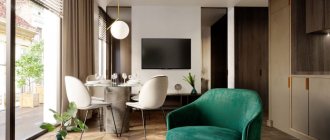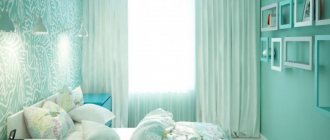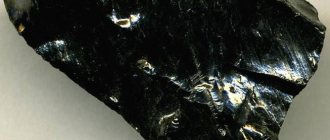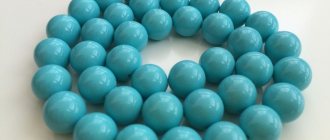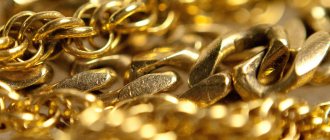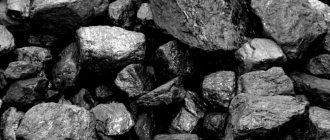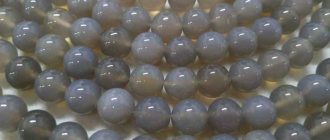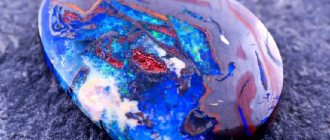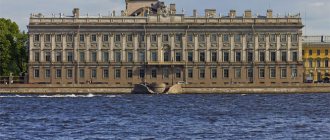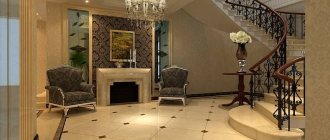» Neutral » Anthracite color and its combination
Anthracite is the oldest coal and the best grade of hard coal. It has a dark gray tint with a metallic sheen. Often a purple undertone is mixed into the color, which distinguishes it from other gray shades. Thus, tone has become a household name for the same complex gray, dark tones that are as rare as anthracite itself. The anthracite sky is dark gray with a purple tint. This is not just a description, but the atmosphere before a storm - a great element, you can admire it, or you can be scared, but invariably, it is a grandiose spectacle. As a tone at the junction of gray, black and violet, anthracite acquires its own characteristics - hardness, inevitability, transcendental perception. This is an ideal substitute for black in order to emphasize the subtlety of taste and the breadth of aesthetic and emotional shades.
How to use anthracite color in the interior?
Anthracite color in the interior can be present in all its forms. For example, as the color of wall paint, the shade of exquisite furniture or as the color of accessories. The mysterious sounding word “anthracite”... However, it is nothing more than a very dark, deep shade of gray. Very close to black, but a little softer, as if slightly faded. The name of the color comes from a gemstone with a very high energy value, dark color and glossy surface. Don't deceive yourself. On the one hand, anthracite is a complex color; it can seem gloomy and sad. And if used excessively or incorrectly, it will quickly overload the room with its presence and make it look like a dark dungeon. On the other hand, it can be very sophisticated and elegant. Of course, in the right environment, it can create an interior that is cozy and relaxing, stimulating and concentrating, or extravagant and stunning with modern splendor.
Anthracite is an excellent alternative to black. It doesn't stand out as brightly as black, so it's a little easier to bring into the interior. If you dream of a room where anthracite will dominate, then for this you need to choose a large sunny room. A dark color will not be able to visually reduce it too much. In small or dark interiors, you should rely more on anthracite color additives, which will give the composition a strong character without overloading it.
Combinations with neutral colors
Charcoal gray has all the benefits of neutral colors. It is well suited for use as the main color of a basic wardrobe and, of course, looks great with similar neutral colors: black, white and its shades, darkened versions of blue, beige and brown tones. You should also not forget about other gray tones: if you wish, you can create a beautiful image by using only them.
In what cases are the properties of anthracite as a base color most useful? Primarily for classic sets. All-neutral tones make great work looks that can meet the strictest work dress codes. Both the plus and minus of such sets are their rigor, restraint and minimalism. Rarely does a young woman agree to look boring, so sets of clothes in neutral colors are usually diluted with a colored accessory group, compare the next 2 photos.
charcoal gray and beige neutral range of clothing with burgundy accessories
Read also: Answers: What color is red?
With the participation of anthracite, you can create excellent sets for the evening or less solemn ones for a date. At the same time, evening sets in neutral colors serve as an ideal backdrop for jewelry.
anthracite color beautifully presents jewelry evening look anthracite dress for a special occasion look for a date
Walls in anthracite color
Gray has not been an easy color to use in interior design for a long time. For many, it was considered boring and banal, and its dark shades were considered gloomy and depressing. However, when, after years of pastel dominance, strong colors storm the walls of apartments, anthracite color has every chance. This is due to the blossoming popularity of Scandinavian style interior design. His color palette is based, among other things, on a mixture of gray and white. Additionally, according to color psychology, dark shades of gray convey an impression of security, calm, balance, wisdom and durability. For this reason, anthracite walls are ideal for a study, studio or office, bedroom, living room or bathroom. They will be the ideal basis for modern interiors.
For anthracite color, choose a wall that is best visible in the room. It should be located either opposite a large window, terrace, veranda, or in close proximity to the glazing (for example, perpendicular to the windows). Thanks to different light levels, the anthracite color of the walls changes its character throughout the day. In the morning it is more cozy, and in the evening it is a little more severe. Depending on which embodiment of the color character you prefer, you can paint the wall a more or less dark shade of anthracite.
Of course, anthracite is not just a color. In stores you can also find designer wallpapers of this color, often painted with floral, geometric or abstract patterns. Anthracite color in the interior has also gained recognition due to the popularity of the so-called “board paint”. The surface covered with it can be used at home or in the office, as an office board for sticky notes or for drawing. Soft chalk designs and writing can be easily erased when no longer needed. With its help you can paint not only walls, but also almost any surface of the apartment. Although board paint is available in many varieties, anthracite has made the biggest splash. First of all, because it is associated with the classic school board.
Shades of Gray
In its standard version, gray is rarely used in design. His palette is wide and multifaceted, striking in the variety of its shades. He is capable of being:
- cold (marengo color, graphite, thundercloud);
- warm (quartz, tin);
- neutral (color of wet asphalt, smoking coals).
Such an impressive variety is possible due to the fact that gray can be obtained not only by mixing white and black in different proportions, but also other opposite colors, for example, red with blue or orange with blue.
Moreover, with each combination we will receive a different shade, each of which will serve as an impeccable background for embodying your most interesting ideas and creating a unique, sophisticated and modern interior. A proper combination with other colors will give your home a long-awaited feeling of coziness and comfort.
We suggest you get acquainted with the features of using gray color for kitchen space equipment, and color splashes used in practice to enrich it.
Anthracite (hard coal): characteristics and mining locations
Anthracite is a type of high-quality fossil coal.
It is characterized by a high level of metamorphism (the degree of solid phase and structural mineral change). Like other types of fossils, anthracite coal is formed over many millennia from plants that were without oxygen under layers of soil.
Over a significant period of time, they were subject to the processes of carbonization and humification. This was the reason for the formation of this substance. Carbon gets its international name from the word carbon - coal. This is a reliable fact.
Anthracite is the highest quality type of coal. It is also called carbuncle.
Characteristics of anthracite
In this case, several parameters are distinguished. Namely, the presence of:
- rich black or black-gray color;
- high shine;
- high calorific value;
- significant electrical conductivity;
- great hardness and density.
Features of the formation of this fossil
Several processes are taken into account here. Anthracite is formed in a certain order. First, peat is formed, and then brown coal. Further, under certain influences, this fossil transforms into another substance. Namely, hard coal and anthracite. In the latter case, this is a transition link to graphite.
Anthracite (coal) occurs at a depth of about 6 km. Places where these fossils often self-form are characterized by peculiar shifts in the earth's crust. These are mainly spurs of the mountains.
The most numerous anthracite deposits are located in the coal basin in the Donetsk region.
Anthracite coal: product characteristics
In this case, there are many certain nuances. Anthracite (from the Greek anthrakitis) is a humic fossil coal. It has the highest degree of metamorphism. When observing it under a microscope, it is clear that plant remains are difficult to distinguish.
Anthracite is coal that is black in color, often with a grayish tint. Sometimes variegated tarnish is also found in its color. It gives a black velvety line on a porcelain plate. Anthracite (coal) is also characterized by a strong metallic luster.
It has high viscosity, does not sinter, and has good electrical conductivity. Its highest hardness on the mineralogical scale is 2.0-2.5, organic mass density is 1500-1700 kg/m3. Its heat of combustion is 33.9-34.8 MJ/kg (8100-8350 kcal/kg).
It has an analytical low humidity of 1-3% and contains in the combustible mass up to 9% of volatile substances, 93.5-97.0% carbon, 1-3% hydrogen, oxygen and nitrogen 1.5-2.0%. This is a definite fact. This fossil, which contains more than 97% carbon in its combustible mass, is called superanthracite.
Based on the volumetric yield of volatile substances, this product is divided into two industrial grades. Namely: with the presence of 220-330 l/kg - these are semi-anthracites, and with a volumetric output of less than 220 l/kg - anthracites.
Properties of anthracite
The characteristics of this type of coal are described by several parameters. Anthracite is characterized by a very rich black-gray or completely black color; There may be some tarnish in the color. This type of coal is characterized by a strong metallic luster and high calorific value. This material has good electrical conductivity, high density and hardness.
On the porcelain plate, anthracite leaves a velvety black line. It has high viscosity and is almost not subject to sintering. Hardness on the mineralogical scale ranges from 2.0 to 2.5; the density of organic mass ranges from 1500 to 1700 kg/cubic meter. m. The heat of combustion of anthracite is about 8200 kcal/kg.
The total mass of anthracite contains:
- carbon (93.5-97%);
- volatile substances (up to 9%);
- hydrogen (1-3%);
- oxygen and nitrogen (1.5-2%).
For comparison, brown coal contains on average only 65-70% carbon.
As a humic fossil coal, anthracite has the highest degree of metamorphism. Even under a microscope it is difficult to see plant remains in it.
Advantages of the said fossil
This product is the highest quality type of coal produced. It differs significantly from other types, as it has the following parameters:
- High content of fixed carbon. In this case it is 94-99%.
- Low sulfur content.
- High specific heat of combustion.
- Low moisture content.
- Burns without smoke or flame.
- Burns out quickly.
- High density organic mass. In this case, 1500-1700 kg per square meter.
- The specific gravity of anthracite coal is 1.5-1.7.
- High electrical conductivity.
In addition, anthracite coal, the photo of which is provided in this text, does not sinter during combustion. Its hardness according to the mineralogical scale is 2.0-2.5. Another significant advantage is that when anthracite burns, only up to 5% of volatile substances are released into the air.
This type of fossil has calorific values superior to any other coal, namely: 8200 kilocalories per kilogram. By comparison, gas has a calorific value of 7000 kcal/kg.
